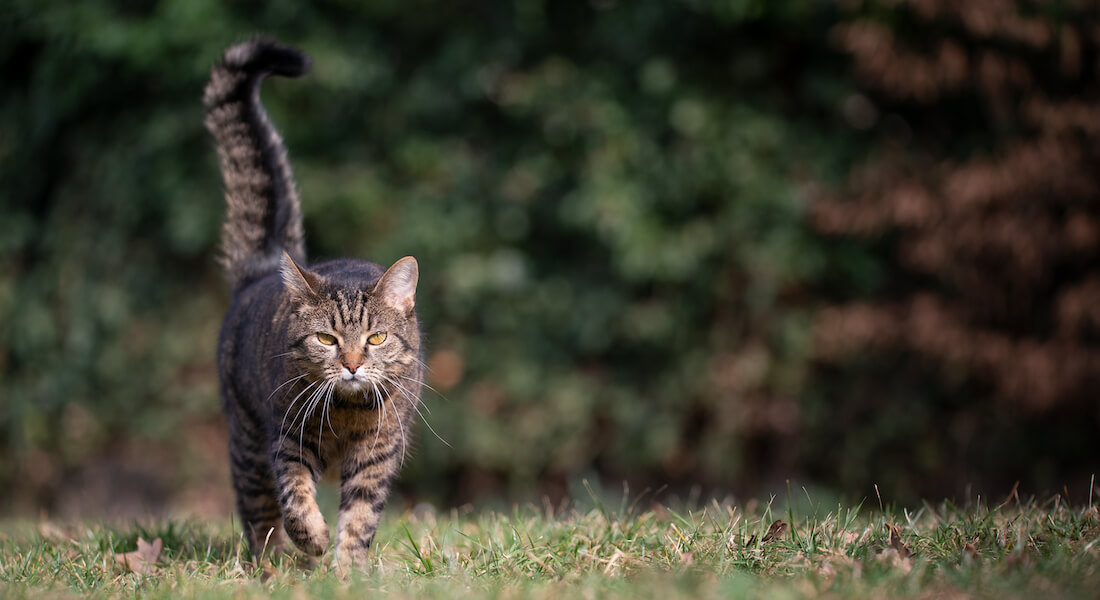Movement Patterns of Roaming Companion Cats in Denmark — A Study Based on GPS Tracking

Jensen, H.A., Meilby, H., Nielsen, S.S., & Sandøe, P. (2022)
Animals. MDPI
Simple summary
In comparison with other companion animals, domestic cats are more likely to roam freely, and this can give rise to conflicts and controversies. To assess the potential magnitude of the problems posed by free-roaming companion cats it is important to know how large an area outside their owners’ property they typically cover. Using GPS tracking, we studied nearly 100 cats in Denmark, a temperate country where around 14% of families own one or more cats, of which nearly three quarters are allowed to roam. We found that although the majority of the cats spent most of their time at their owner’s property and were less active when it rained, they still roamed a lot. The middle value (median) of the area used by the cats was the size of around seven soccer fields (5 ha), but there was huge individual variation, ranging from a little over one to over 150 soccer fields (1–113 ha). Thus, in a suburban neighbourhood, a free-roaming companion cat will typically pass through a lot of other people’s gardens. The area in which the cats roamed tended to be larger when they were younger, had access to nature areas, or were intact males.
Abstract
We studied the roaming patterns of companion cats in Denmark. The movements of 97 cats with outdoor access were traced for about seven days using GPS tracking. Data on the cats were gathered from their owners. The median time cats spent away from their homes was 5 h per day (IQR: 2.5 to 8.8 h), median daily distance moved was 2.4 km (IQR: 1.3 to 3.7 km), and median for 95% BBKDE home range was 5 ha (IQR: 2.9 to 8.5 ha). Cats above seven years of age spent less time away from home, were less active and had a smaller home range than younger cats. Cats with access to nature areas spent more time away from home, were more active and had larger home ranges. Intact male cats spent more time away from home than neutered cats and had larger home ranges as well. Finally, rainfall had an impact on the distance moved by cats: on days without rainfall the cats moved 3.6 km on average (95% CI: 2.8; 4.5 km); and on days with heavy rainfall the cats moved 2.4 km on average (95% CI: 1.6; 3.5 km).
Movement Patterns of Roaming Companion Cats in Denmark — A Study Based on GPS Tracking (URL)
